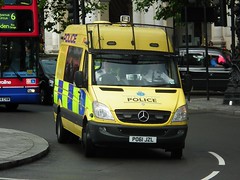This continues from Part 2 of my report on the Merseyside Police Authority meeting of the 30th August 2012. The agenda and reports for item 8 and 9 could be found on the Merseyside Police Authority’s website but since the Merseyside Police Authority was abolished it no longer has a website.

Reports of the Chief Constable
8 – Sustaining Excellence Program – Overview
The Chief Constable explained where they were up to and referred to the framework for savings and frontline resources. He said there was continuous improvement and the plan detailed how it would be taken forward. He asked if there were any questions? The Chair asked anyone if they had any questions?
It was mentioned how it had gone to the Finance and Audit Committee and how officers on the front line had increased from 85% to 88%.
The Chair commented that they had to plan for worse to come, as there was the Comprehensive Spending Review in the Autumn and that the Budget for 2013/2014 was only indicative. He said that public debt was still rising and he wondered if the Budget would be further cut in the next two years, the figures would come out in late October, but this issue would pass over to the Police and Crime Commissioner, but presented further challenges for the force.
Mrs Frances Street (Independent) asked if their staff were aware of what’s coming, how they were going to support this very painful moment and what support would they offer them with finding jobs?
A senior police officer answered that they were careful that staff were kept up to date and briefed. This was done through his team, Nicky and the intranet. He said that any questions were answered as quickly as possible, but it was a process with a decision phase in October/November. After this there would be the inevitable redeployment, which he said they “can’t make pain-free” but he “understands it’s a difficult time for people”.
Mrs Frances Street (Independent) asked if they got counselling or help if they were made redundant in finding a role in another organisation?
The answer given was that Scientiam were looking at what they provide.
The Chair said it was a long-standing principle and that they worked in a high stress environment. There were no further questions and the report was noted.
Reports of the Chief Constable
Item 9 – Officers on Restricted and Recuperative Duties
The Chief Constable gave Members of the Police Authority an update on the current profile of the 370 officers on restrictive and recuperative duties. He outlined the assessment process and the effect of the 2012/2013 Budget on thirty leaving (who would be replaced by forty). The officers on restricted and recuperative duties did mid and back office functions, but he wanted to make sure nobody on restricted/recuperative duties was fit to do a frontline job.
At this point he was heckled by a union rep.
The Chief Constable referred to a table in the report and the cost. The Chair asked for any observations or comments?
Professor Zack-Williams (Independent) said it was an analytic paper but that he was confused with some of the categories, he asked about officers who stayed a long time on restricted duties regarding offences?
The Chief Constable answered that it was just officers who were injured or ill, not those on restricted duties because of professional standards.
Professor Zack-Williams pointed out it was not clear in the report.
The Chief Constable accepted that it wasn’t.
Professor Zack-Williams asked about the H1 process?
The Chief Constable said that they were referred to a medical practitioner to see if they were fit to leave on a medical pension. Those on restricted duties were either incapacitated or not on front facing duties while under investigation.
The Chair asked for observations.
A Member of the Police Authority asked if those nearing retirement were declaring they were long-term sick and the Member wondered whether they found this happens in the police service?
The Chief Constable said they were difficult issues, but that there were isolated cases where it happens. They were focused on it and said that unfortunately that these people got a doctor’s note.
The Chair mentioned processes where they were referred on and it was not just the case that a medical certificate was OK and that it is chased up.
A police officer referred to the work of the Performance Improvement Unit, out of ten officers, all had returned to work except two that had resigned. He pointed out that when people weren’t at work it left more work for the people left behind, which caused more problems as there was “less fat in the system”.
Mrs Frances Street (Independent) referred to John Martin and how impressed she was by the handle he had on it. She compared it to the private sector and explained that if there was leadership from the top then good practice filters down quickly.
The Chief Constable said he felt he spent far too much time visiting people with serious illnesses, such as people with cancer wondering why the Chief Constable was seeing them.
Prof Zack-Williams asked a further question.
The answer given was that the Occupational Health Unit and Human Resources had worked hard for twelve months, but a lead from the Chief Officers ensured consistency. The details were in the report, there were good signs that restricted and recuperative duties of police officers were reviewed and they were looking to apply it to police staff too.
The report was noted.
The Chair said there was no AOB and moved a motion to exclude the public from the final item on the meeting’s agenda (Strategic Options Project (Wave 2b) – Force Contact Centre Update) on the basis that it would result in information relating to an individual being revealed. He thanked the public for their attendance.
